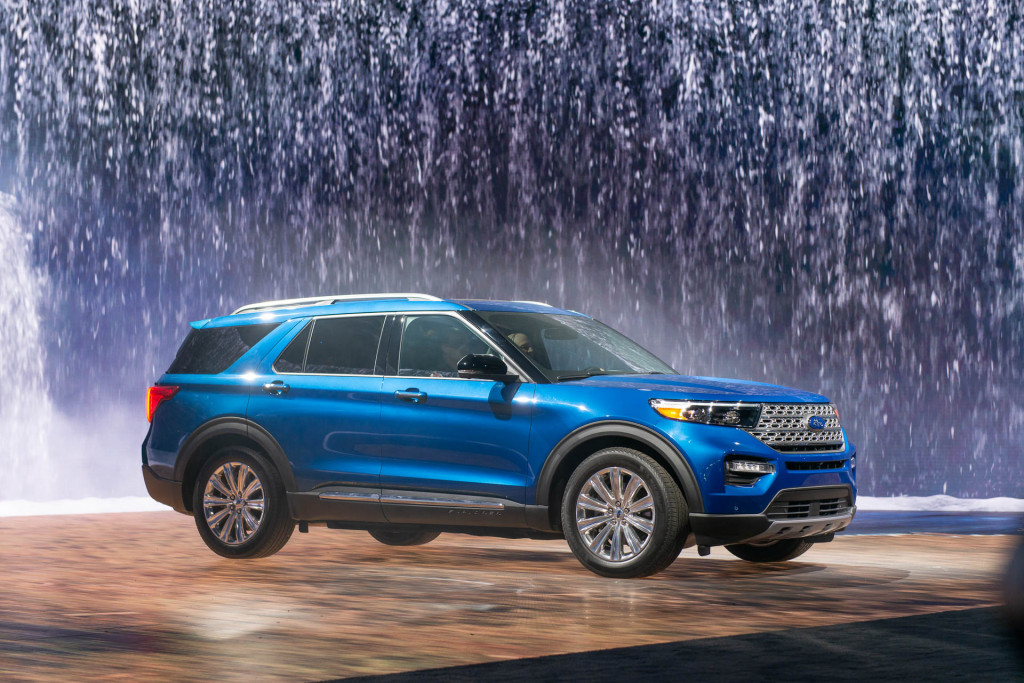The 2020 Ford Explorer will do its darnedest to make sure a tire puncture won't immediately put a driver on the side of the road with self-sealing tires from Michelin.
Michelin's self-sealing tires aren't new—they were developed for the Chevrolet Bolt EV—but the 2020 Explorer marks the first time an SUV will wear them as standard equipment on select trims, Ford announced on Tuesday. Specifically, the Platinum and Limited Hybrid four-wheel-drive models will get the self-sealing tires as standard. They'll be optional on non-hybrid Explorer Limited models. Every Explorer will also come with a spare tire and use a 255/55R20 tire size.

2020 Ford Explorer, 2019 Detroit auto show
How do the trick tires work? If the driver runs over a nail, for example, the tires are lined with an eco-friendly rubber sealant to plug the puncture and keep air from escaping quickly. Internal Michelin data showed the tires stopped 90 percent of punctures that measured up to a quarter-inch in diameter. These kinds of punctures only showed a loss of 15 psi over one week after the puncture. So, yes, the driver will still need to replace or repair the tire, but at least it won't leave him or her stranded within 10 minutes of the incident's occurrence.
If the object, like a screw, stays in the tire, the sealant surrounds the screw to keep air from escaping. If the screw falls out, the sealant fills the tire tread to fill the hole up to a quarter of an inch. The safety net ensures the Explorer is still safe to drive for the time being. Any low tire-pressure warnings should be addressed sooner rather than later. Like other tires, the self-sealing tires can't fix punctures in the sidewalls.
The self-sealing tires will have to do until tire manufacturers realize their dreams of producing airless tires that will make punctures and flats memories of the past.


